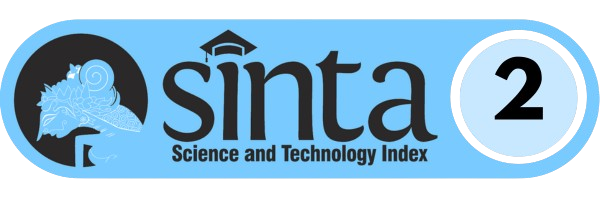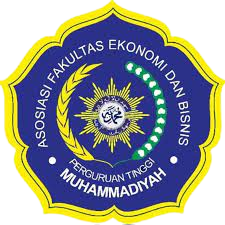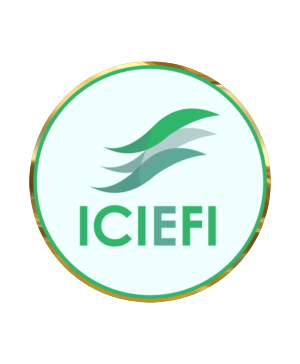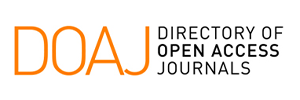SMEs Performance and Halal Food Supply Chain
DOI:
https://doi.org/10.24269/ekuilibrium.v18i1.2023.pp62-71Abstract
The food and beverage business has a strategic role in the economy and food security, where 90% of national food products are provided by SMEs. SMEs also control 99.9% of the industrial market, absorb 97% of the national workforce and contribute 60% to GDP. On the other hand, food and beverage SMEs have the lowest resistance to the COVID-19 pandemic, so efforts need to be made to strengthen organizational resilience to the uncertainty of the business environment. This study aims to describe the food and beverage business supply chain, analyze the level of business efficiency and analyze the key variables of the performance of food and beverage SMEs in Surakarta City after the covid-19 pandemic. This research uses supply chain analysis, efficiency analysis and structural analysis. Supply chain analysis uses descriptive qualitative analysis. Efficiency analysis uses a non-parametric approach whose defeat uses DEAP. Analysis of determining the key variables of SME performance using structural analysis. The study used 20 variables to be processed into key variables for the performance of SMEs. The research involves academia, business, government, and the community (ABGC) in FGDs to obtain a comprehensive study. Data analysis using structural analysis using MICMAC.The results of the study explain that the performance of food and beverage SMEs was influenced by the product supply chain, there are still many food and beverage businesses that have not yet reached the level of efficiency, either in resource allocation or in achieving output. The results also explain 5 key variables out of 20 variables that are used to determine the main variables that have a high influence in supporting business performance, namely achievement-oriented, effective marketing, optimism, market understanding, and risk management.
Â
References
Ambrosini, V., & Bowman, C. (2009). What are dynamic capabilities and are they a useful construct in strategic management? International Journal of Management Reviews. https://doi.org/10.1111/j.1468- 2370.2008.00251.x
Badan Pusat Statistika. (2021). Statistik Indonesia 2020 Statistical Yearbook of Indonesia 2020. Statistical Yearbook of Indonesia, April, 192
Benjumea-Arias, M., Castañeda, L., and ValenciaArias, A. (2016). Structural analysis of strategic variables through MICMAC use: Case Study. Mediterranean. Journal of Social Sciences, 7(4), 11–19. doi:10.5901/mjss.2016.v7n4p11.
Chow, W. S., Madu, C. N., Kuei, C. H., Lu, M. H., Lin, C., & Tseng, H. (2008). Supply chain management in the US and Taiwan: An empirical study. Omega, 36(5), 665-679
Collewaert V, Filatotchev I, and Khoury TA. 2021. The View of Angels from Above: Angel Governance and Institutional Environments. Academy of Management Perspectives. 2021: 35 (1).
Derwik, P., Hellström, D., & Karlsson, S. (2016). Manager competences in logistics and supply chain practice. Journal of Business Research, 69(11), 4820-4825.
Elam, A. and Terjesen, S. (2010), “Gendered institutions and cross-national patterns of business creation for men and womenâ€, The European Journal of Development Research, Vol. 22 No. 3, pp. 331-348.
Fahrika A.I., dan Roy, J. 2020. Dampak pandemi covid 19 terhadap perkembangan makro ekonomi di indonesia dan respon kebijakan yang ditempuh. I N O V A S I - 16 (2), 2020; 206-213
Giyanti, I., & Indriastiningsih, E. (2019). Impact of Halal Certification on The Performance of Food Small Medium Enterprises. Jurnal Ilmiah Teknik Industri (JITI), 18(2), 116–123. https://doi.org/10.23917/jiti.v18i2.7242
Gupta, V.A. (2014), “Gender differences in evaluation of new business opportunity: a stereotype threat perspectiveâ€, Journal of Business Venturing, Vol. 29 No. 2, pp. 273-288.
Hadi, S. Pengurangan Risiko Pandemik Covid-19 Secara Partisipatif: Suatu Tinjauan Ketahanan Nasional terhadap Bencana. The Indonesian Journal of Development Planning, 2020: IV (2)
Hamze Mousavi, Samira Jalilvand, Shahdokht Sohrabi Sani, Jewell Anne Lee Hartman, Marek Grabowski, 2020. Electronic properties of different configurations of double-strand DNA-Like nanowires, Solid State Communications, Volume 319, 2020, 113974, ISSN 0038-1098, https://doi.org/10.1016/j.ssc.2020.113974.
Isa, M., Wajdi, M.F, Mabruroh, Hayati, S.F.N., Kamarulzaman, N.H., 2021. Sustainability of Rice Business in Flood-Prone Areas. Journal of Environmental Research, Engineering and Management Vol. 77 / No. 4 / 2021 pp. 6–18 DOI 10.5755/j01.erem.77.4.28096
Isa, M dan Mangifera, L. (2019). Continuous Flood Risk Reduction on MSMEs: Implementation of Mactor Program. Economic Journal of Emerging Markets, 11(1), 113–121.
Isa M, Fauzi A, Susilowati I. Flood risk reduction in the northern coast of Central Java Province, Indonesia: An application of stakeholder's analysis. Jà mbá: Journal of Disaster Risk Studies. 2019: 11(1). https://doi.org/ 10.4102/jamba.v11i1.660
Mafruhah I, Supriyono, Mulyani NS, Istiqomah N. Causality Between Tourism Industry Development and the Ecological Sustainability In Marine Environment: A Convergence and Divergence among Stakeholder With Mactor Analysis. International Journal of Energy Economics and Policy, 2020: 10(4)
Mangifera, L., & Mawardi, W. (2022). Digital Transformation and Its Impact on Financial Performance: in the Food and Beverage Small Business Sector. 49–61.
Mangifera, L., Wajdi, F., Amalia, F., & Khasah, A. U. (2022). The Role of Digital Innovation in SMEs: A Financial Performance Perspective. Jurnal Manajemen Universitas Bung Hatta, 17(02), 157–170.
Narula, S., Pal, S., Saini, V., Saxena, P., Goyal, A., & Yadav, M. (2018). Role of TQM in Sustained Business Performance in Indian Automotive Supply Chain. In Harnessing Human Capital Analytics for Competitive Advantage (pp. 121-143). IGI Global.
Nisa, A. A. K., Subiyanto, S. and Sukamta, S. 2019. Penggunaan Analytical Hierarchy Process (AHP) Untuk Pemilihan Supplier Bahan Baku, JSINBIS (Jurnal Sistem Informasi Bisnis), vol. 9, no. 1, pp. 86-93, Jun. 2019. https://doi.org/10.21456/vol9iss1pp86-93
Novitasari, M. (2019). Optimalisasi Potensi Perbankan Syariah di Indonesia bagi UMKM Halal dalam Mendukung Sustainable Development Goals. Majalah Ekonomi, 24(1411–9501), 49– 58. Retrieved from https://jurnal.unipasby.ac.id/index.php/majalah_ekonomi/article/view/1902
Portillo-Tarragona P, Scarpellini S, Moneva JM, Valero-Gil J, Aranda-Usón A. Classification and measurement of the firms’ resources and capabilities applied to ecoinnovation projects from a Resource Based view perspective. Sustainability (Switzerland). 2018: 10(9).
Resti, I.L.V. and Monika, A.K., 2020. The Potential Of Creative Economy Export In 2019. Jurnal Ekonomi dan Pembangunan Vol 28, No. 1, 2020, page 29-40
Tatiana, Andreeva and Ritala, P. 2016 What are the sources of capability dynamism? Reconceptualizing dynamic capabilities from the perspective of organizational change Baltic Journal of Management, Vol. 11 Issue: 3, pp. 238-259
Schreyögg, G., and Martina, K (2007). How dynamic can organizational capabilities be? Towards a dual-process model of capability dynamization. Strategic Management Journal, 28, 913-933.
Sharma, S.K., B. N. Panda, S. S. Mahapatra, and S. Sahu. (2011) Analysis Of Barriers For Reverse Logistics: An Indian Perspective.International Journal of Model Optimisation, 1(2): 101-106.
Soesanto, H. (2021). Pemetaan Variabel-Variabel Pembentuk Indeks Daya Saing Daerah Menggunakan Metode MICMAC. Jurnal Kebijakan Pembangunan Daerah, 5(1): 1– 8.
Teece, David. J., Gary Pisano, and Amy Shuen, Amy. 1997. “Dynamic capabilities and strategic management.†Strategic Management Journal 18: 509-533.
Wang, Y., & Shi, X. (2011). Thrive, not just survive: Enhance dynamic capabilities of SMEs through IS competence. Journal of Systems and Information Technology,13(2), 200–222.
Wu, Z.A. (2012), “Second-order gender effects: the case of US small business borrowing costâ€, Entrepreneurship Theory and Practice, Vol. 36 No. 3, pp. 443-463.
Wajdi MF, Isa M, Mangifera L. 2020. The Analysis of Business Vulnerability in Rice Supply Chain in the Flood Prone Areas. TEST Engineering & Managemen 2020 (82)
Wajdi MF, Isa M, Mangifera L. 2020. Strategi Penguatan Inkubator Bisnis Dalam Pengembangan Usaha Kecil Dan Menengah. Daya Saing: Jurnal Ekonomi Manajemen Sumber Daya Vol. 22, No. 2, Desember 2020
Zimmer, T.W. and Scarborough, N.M. (2006), Essential of Entrepreneurship and Small Business Management, Prentice Hall of India Pvt.Ltd, New Delhi.
Downloads
Published
How to Cite
Issue
Section
License
Retained Rights/Terms and Conditions of Publication
1. As an author you (or your employer or institution) may do the following:
- make copies (print or electronic) of the article for your own personal use, including for your own classroom teaching use;
- make copies and distribute such copies (including through e-mail) of the article to research colleagues, for the personal use by such colleagues (but not commercially or systematically, e.g. via an e-mail list or list server);
- present the article at a meeting or conference and to distribute copies of the article to the delegates attending such meeting;
- for your employer, if the article is a ‘work for hire’, made within the scope of your employment, your employer may use all or part of the information in the article for other intra-company use (e.g. training);
- retain patent and trademark rights and rights to any process, procedure, or article of manufacture described in the article;
- include the article in full or in part in a thesis or dissertation (provided that this is not to be published commercially);
- use the article or any part thereof in a printed compilation of your works, such as collected writings or lecture notes (subsequent to publication of the article in the journal); and prepare other derivative works, to extend the article into book-length form, or to otherwise re-use portions or excerpts in other works, with full acknowledgement of its original publication in the journal;
- may reproduce or authorize others to reproduce the article, material extracted from the article, or derivative works for the author's personal use or for company use, provided that the source and the copyright notice are indicated, the copies are not used in any way that implies RCEPM-LIPI endorsement of a product or service of any employer, and the copies themselves are not offered for sale.
All copies, print or electronic, or other use of the paper or article must include the appropriate bibliographic citation for the article's publication in the journal.
2. Requests from third parties
Although authors are permitted to re-use all or portions of the article in other works, this does not include granting third-party requests for reprinting, republishing, or other types of re-use. Requests for all uses not included above, including the authorization of third parties to reproduce or otherwise use all or part of the article.
3. Author Online Use
- Personal Servers. Authors and/or their employers shall have the right to post the accepted version of articles pre-print version of the article, or revised personal version of the final text of the article (to reflect changes made in the peer review and editing process) on their own personal servers or the servers of their institutions or employers without permission from Universitas Muhamamdiyah Ponorogo, provided that the posted version includes a prominently displayed Universitas Muhamamdiyah Ponorogo copyright notice and, when published, a full citation to the original publication, including a link to the article abstract in the journal homepage. Authors shall not post the final, published versions of their papers;
- Classroom or Internal Training Use. An author is expressly permitted to post any portion of the accepted version of his/her own articles on the author's personal web site or the servers of the author's institution or company in connection with the author's teaching, training, or work responsibilities, provided that the appropriate copyright, credit, and reuse notices appear prominently with the posted material. Examples of permitted uses are lecture materials, course packs, e-reserves, conference presentations, or in-house training courses;
- Electronic Preprints. Before submitting an article to an Ekuilibrium: Jurnal Ilmiah Bidang Ilmu Ekonomi, authors frequently post their manuscripts to their own web site, their employer's site, or to another server that invites constructive comment from colleagues. Upon submission of an article to Ekuilibrium: Jurnal Ilmiah Bidang Ilmu Ekonomi, an author is required to transfer copyright in the article to Economy Faculty Universitas Muhammadiyah Ponorogo, and the author must update any previously posted version of the article with a prominently displayed Economy Faculty Universitas Muhammadiyah Ponorogo copyright notice. Upon publication of an article by the Universitas Muhammadiyah Ponorogo, the author must replace any previously posted electronic versions of the article with either (1) the full citation to the work with a Digital Object Identifier (DOI) or link to the article abstract in Ekuilibrium: Jurnal Ilmiah Bidang Ilmu Ekonomi journal homepage, or (2) the accepted version only (not the final, published version), including the Economy Faculty Universitas Muhammadiyah Ponorogo copyright notice and full citation, with a link to the final, published article in journal homepage.
4. Articles in Press (AiP) service
Economy Faculty Universitas Muhammadiyah Ponorogo may choose to publish an abstract or portions of the paper before we publish it in the journal. Please contact our Production department immediately if you do not want us to make any such prior publication for any reason, including disclosure of a patentable invention.
5. Author/Employer Rights
If you are employed and prepared the article on a subject within the scope of your employment, the copyright in the article belongs to your employer as a work-for-hire. In that case, Economy Faculty Universitas Muhammadiyah Ponorogo assumes that when you sign this Form, you are authorized to do so by your employer and that your employer has consented to the transfer of copyright, to the representation and warranty of publication rights, and to all other terms and conditions of this Form. If such authorization and consent has not been given to you, an authorized representative of your employer should sign this Form as the Author.
6. RCEPM-LIPI Copyright Ownership
It is the formal policy of Economy Faculty Universitas Muhammadiyah Ponorogo to own the copyrights to all copyrightable material in its technical publications and to the individual contributions contained therein, in order to protect the interests of the Economy Faculty Universitas Muhammadiyah Ponorogo, its authors and their employers, and, at the same time, to facilitate the appropriate re-use of this material by others. Economy Faculty Universitas Muhammadiyah Ponorogo distributes its technical publications throughout the world and does so by various means such as hard copy, microfiche, microfilm, and electronic media. It also abstracts and may translate its publications, and articles contained therein, for inclusion in various compendiums, collective works, databases and similar publication.
7. Licensing Terms
Ekuilibrium is licensed under a Creative Commons Attribution-ShareAlike 4.0 International License.
Permissions beyond the scope of this license may be available at https://journal.umpo.ac.id/











